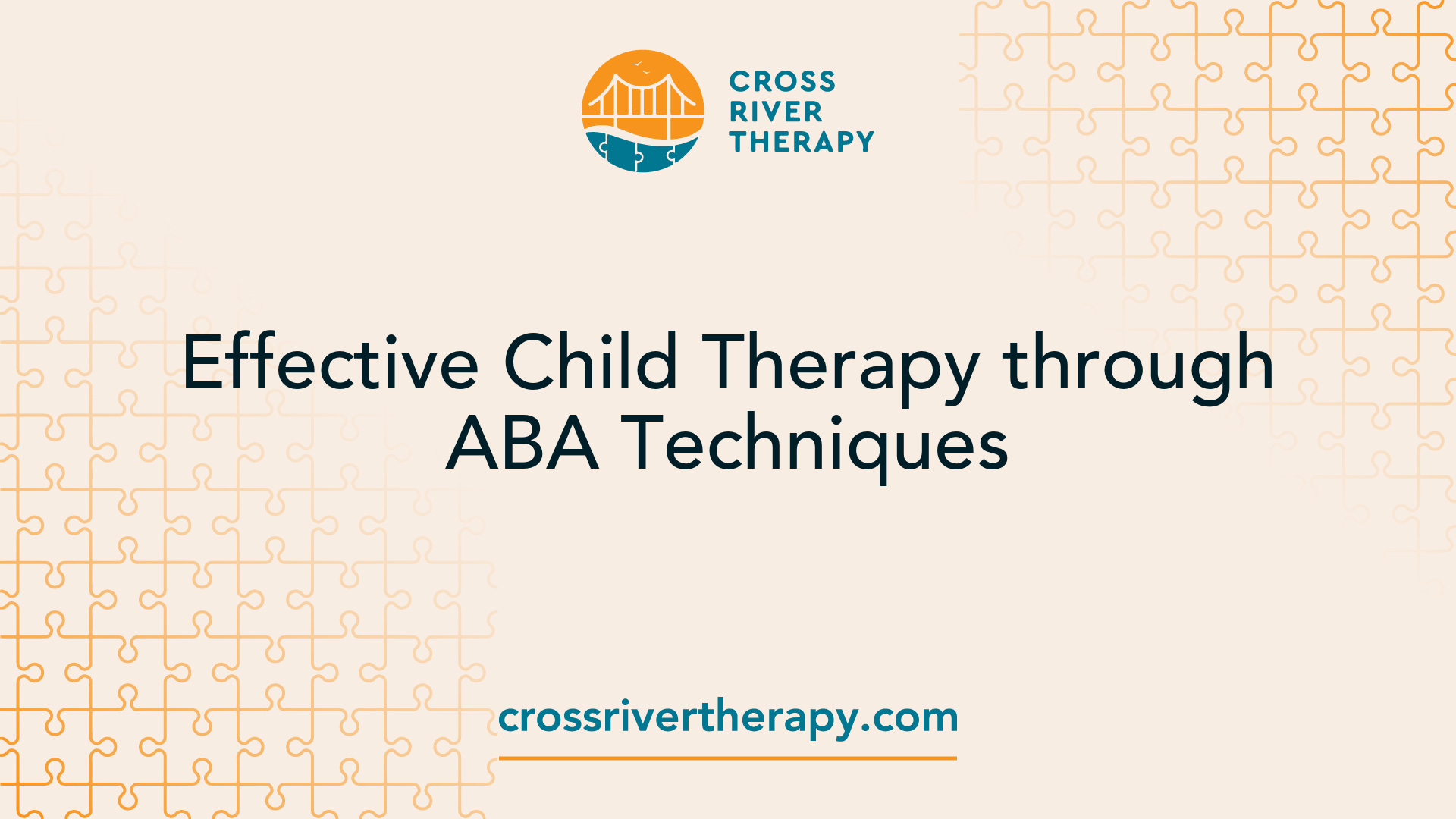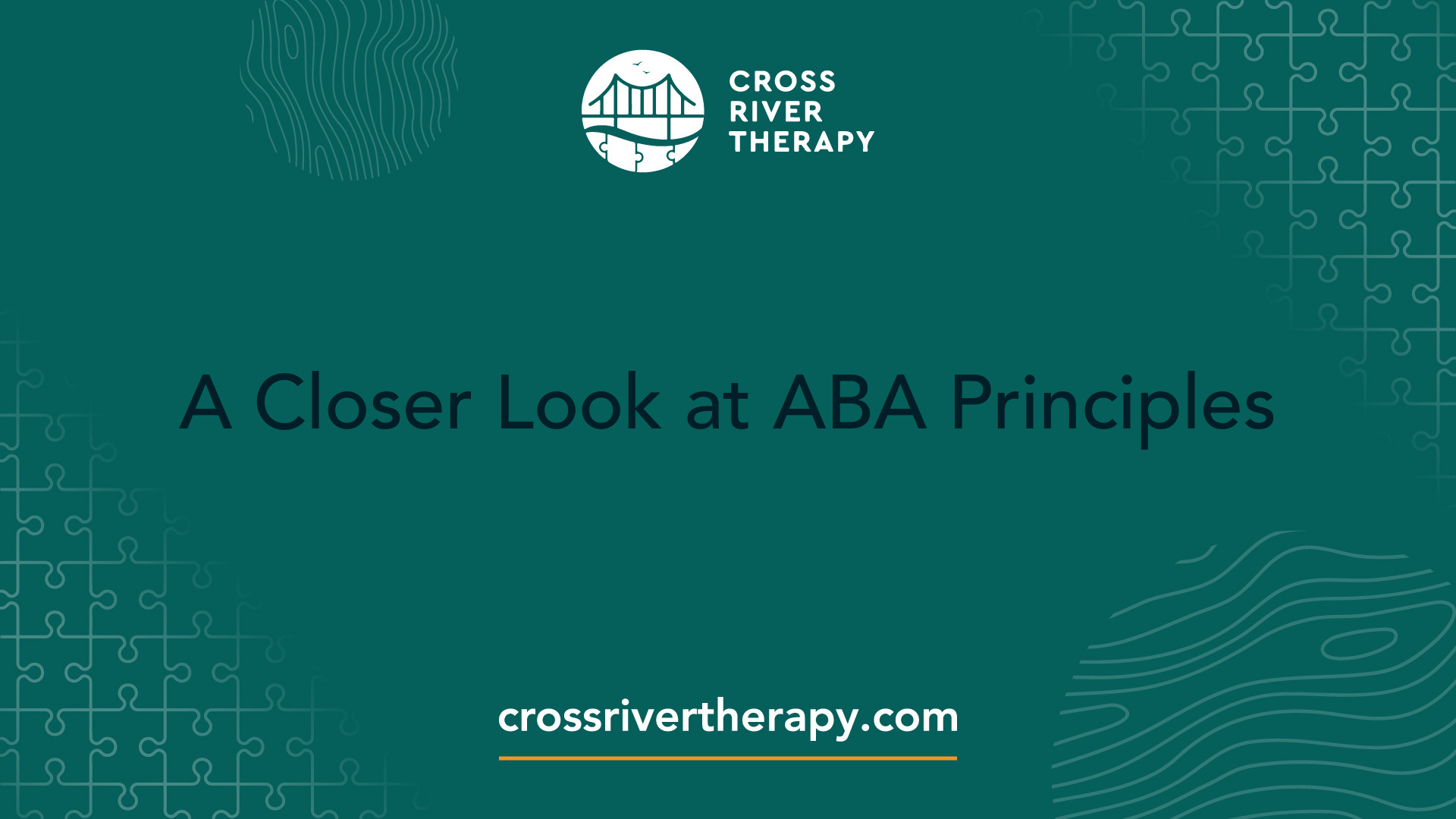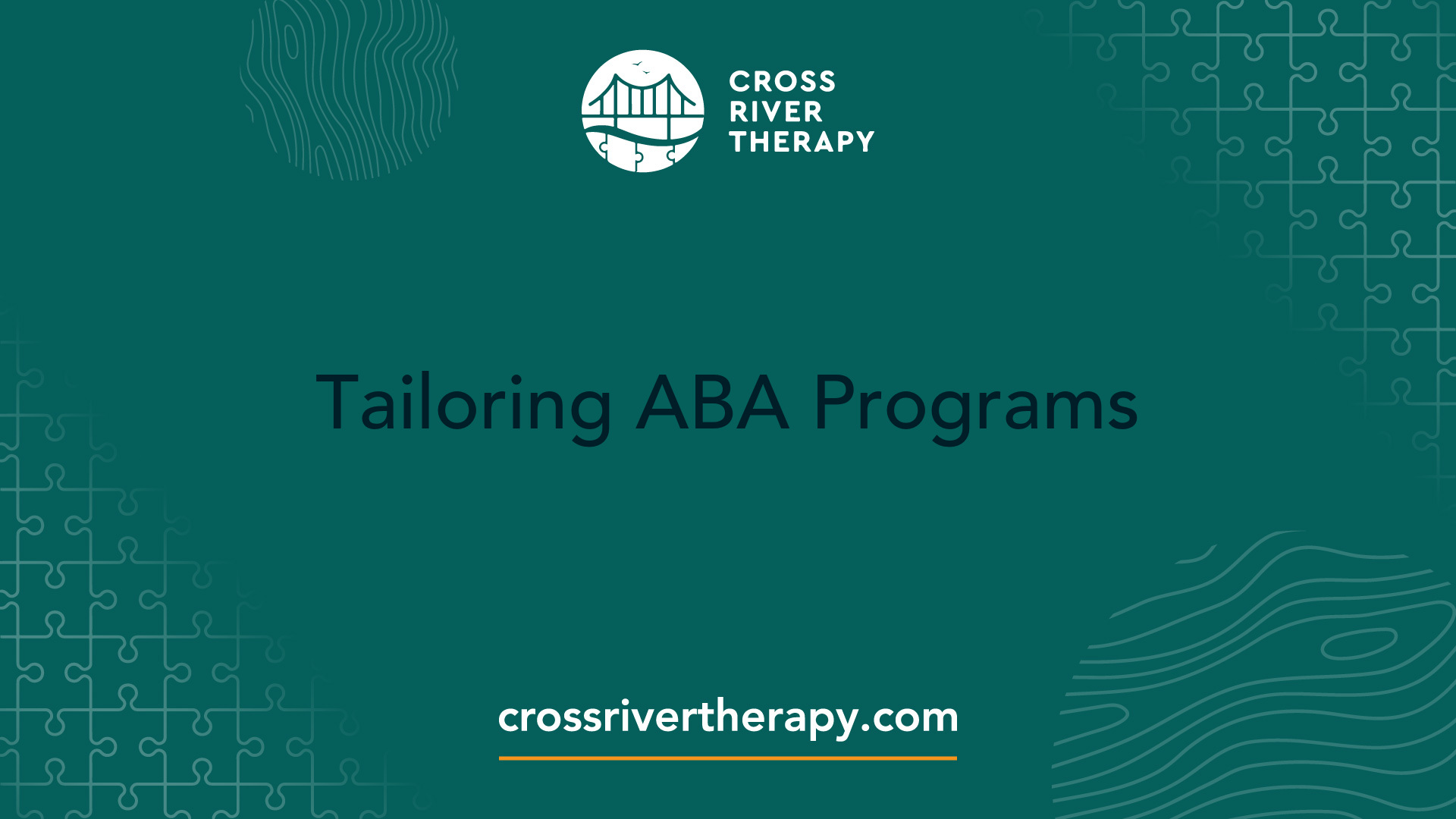Effective Child Therapy through ABA Techniques
Discover how ABA therapy for child therapy helps kids with autism thrive through tailored techniques and support!

Understanding ABA Therapy
ABA Therapy in Autism
Applied Behavior Analysis (ABA) therapy is a structured approach widely recognized for supporting children diagnosed with autism spectrum disorder (ASD). According to research, ABA therapy is an evidence-based best practice, supported by the US Surgeon General and the American Psychological Association. Over 20 studies endorse its effectiveness in enhancing outcomes for children with autism through intensive and long-term treatment [1].
ABA therapy is adaptable, tailored to meet the individual needs of each child. The primary focus of an ABA program is on improving daily life skills, communication, and social interaction, fostering greater independence. As children progress, they become better equipped to manage challenges both at home and in school. A well-designed ABA therapy plan targets specific goals such as:
Goal TypeFocusCommunicationEnhancing verbal and non-verbal communication skillsBehavioral FlexibilityEncouraging tolerance of non-preferred items and activitiesSocial SkillsDeveloping social interaction and play skillsDaily Living SkillsImproving everyday skills necessary for independence, such as dressing or meal prepDecreasing Challenging BehaviorsReducing behaviors that may interfere with learning
Studies indicate that approximately 50% of individuals who receive ABA services before the age of four experience significant improvements in IQ, verbal skills, and social functioning, with some able to attend mainstream schools.
Benefits of ABA Therapy
The benefits of ABA therapy extend beyond just the child; they positively impact families as well. By focusing on essential behaviors and skills, ABA not only aids children in navigating their environments more effectively, but it also builds confidence and enhances family dynamics.
Some notable benefits include:
Given these advantages, many parents consider ABA therapy as a primary option for their child's therapy journey. For additional information on this type of therapeutic approach, explore our resources on ABA therapy for child behavioral services and ABA therapy for behavioral support programs.
A Closer Look at ABA Principles

Understanding the principles of ABA therapy is essential for parents looking to implement effective strategies for their children diagnosed with autism. Two core components of this therapy are positive reinforcement and the role of behavior analysts.
Positive Reinforcement in ABA
Positive reinforcement is a fundamental concept in ABA therapy. It involves providing a reward following a behavior, increasing the likelihood of that behavior being repeated. For children, this reward can take various forms, including praise, tangible rewards, or activities they enjoy [1].
This technique helps children make connections between their behavior and the consequences. When children receive positive feedback for completing a task or reaching a goal, they are encouraged to repeat those desired behaviors in the future.
Desired BehaviorRewardLikelihood of RepetitionCompleting a communication taskStickersIncreasedSharing toys with peersExtra playtimeIncreasedFollowing instructionsVerbal praiseIncreased
By focusing on improving communication, social skills, and daily living skills, ABA therapy can support children in learning to navigate their environments more effectively. For more information on how to implement ABA principles at home, visit our articles on aba therapy for child behavioral programs and aba therapy for behavioral analysis programs.
Role of Behavior Analysts
Behavior analysts play a crucial role in the implementation of ABA therapy. They are trained professionals who work closely with children to develop individualized ABA plans tailored to each child’s unique needs. These plans typically focus on specific goals such as increasing desirable behaviors, decreasing challenging behaviors, and improving overall functioning in various settings.
A child's ABA therapy plan might include objectives that encompass social play, daily living skills, and emotional regulation. By collaborating with parents and teachers, behavior analysts ensure that the strategies used during therapy align with what the child experiences at home and in school, thereby promoting generalization of skills.
The commitment of behavior analysts to evidence-based practices helps children in achieving meaningful progress in their behavior and skill development. For insights on setting effective goals and strategies, consider checking our articles on aba therapy for autism behavioral services and aba therapy for autism therapy services.
Tailoring ABA Programs

Creating effective ABA therapy programs for children with autism involves personalized approaches that cater to each child's unique needs. Individualized programs emphasize tailoring therapeutic strategies to maximize progress and development.
Individualized ABA Programs
Individualized ABA programs are designed based on the specific strengths and challenges of each child. It is essential for the program to address the unique behavioral, communicative, and social needs of the child.
Research indicates that children participating in intensive, long-term ABA therapy show positive results in areas such as communication, social interactions, and academic performance [4]. While many children may require between 10 to 40 hours of therapy per week, the exact number should depend on individual requirements and not be fixed at 40 hours.
Weekly Therapy HoursChild's Progress10 - 15 hoursInitial development in communication and social skills15 - 25 hoursModerate improvement in behavior and learning25 - 40 hoursSignificant progress in multiple domains
Consistent collaboration among parents, therapists, and educators enhances the effectiveness of the individualized program. Parents should also participate in caregiver training sessions, which are recommended to last between 30 minutes to one hour weekly, in order to reinforce skills learned during therapy.
Designing ABA Treatment Goals
Setting appropriate ABA treatment goals is crucial for a child’s progress. Goals should be specific, measurable, attainable, relevant, and time-bound (SMART) to ensure clarity and ease of tracking progress. Typical goals may include improvements in:
Therapists conduct ongoing assessments to evaluate a child’s progress toward their goals. Adjustments to the goals and techniques may be necessary based on noted improvements or challenges. The focus should always remain on enhancing the child's abilities in meaningful ways.
For additional insights into various programs and services available, please explore links to aba therapy for autism behavioral services and aba therapy for child behavioral programs. These resources provide comprehensive information on the options best suited for your child.
ABA Therapy Techniques
In the realm of ABA therapy, several techniques are utilized to facilitate skill acquisition and improve social interactions for children diagnosed with autism. These methods are essential in ensuring effective learning and developmental growth.
Teaching Essential Skills
ABA therapy is particularly effective in teaching essential life skills to children with autism. Skills such as personal hygiene, grooming, and fine motor dexterity are crucial for independence and day-to-day functioning. ABA techniques can guide children in learning these skills in a structured manner.
Additionally, ABA can help children learn critical tasks like sleeping through the night and using the bathroom. This requires significant parental involvement and diligent data collection to monitor progress effectively. The following table outlines some essential skills often targeted in ABA therapy:
Skill AreaExamples of Skills TaughtPersonal HygieneBrushing teeth, handwashingMotor SkillsUsing scissors, tying shoesSelf-CareDressing independentlyDaily LivingPreparing simple meals, cleaning up
Enhancing Social Interactions
Social skills are vital for children to navigate their environments and build relationships. ABA therapy can significantly enhance these abilities through targeted interventions. For instance, children learn how to engage with peers by participating in group activities that promote social interaction. Activities may include games that develop skills like taking turns, sharing, and even learning ball skills, which can help facilitate peer interactions.
To maximize the effectiveness of ABA in enhancing social interaction, parents are encouraged to participate in meetings with the child's Board Certified Behavior Analyst (BCBA). This collaboration enables the sharing of insights about interventions applied at home, discussion of treatment goals, and tracking child progress [7]. The following table illustrates some key areas of focus for improving social skills:
Social Skill AreaTechniques UsedPeer InteractionRole-playing, group gamesConversational SkillsInitiating conversations, active listeningSharing and Turn-TakingStructured play activitiesNon-Verbal CommunicationUsing gestures, facial expressions
By utilizing these ABA therapy techniques, children with autism can develop vital skills that will aid in their overall personal development and social interactions. For more information on effective ABA programs, consider exploring aba therapy for child behavioral services and aba therapy for autism behavioral programs.
Parental Involvement in ABA
Importance of Parental Involvement
Parental involvement plays a critical role in the effectiveness of ABA therapy for child therapy. Parents are instrumental in reinforcing the skills their children learn in therapy sessions. Engaging in the therapy process not only supports the child's learning but also improves overall family dynamics.
Research indicates that involving parents in ABA programs can enhance family life and strengthen parent-child relationships. Parents learn effective strategies to assist their children both at home and in public settings. This involvement enables them to create consistent routines that further reinforce the skills being taught in therapy. A study highlights that parents, Board Certified Behavior Analysts (BCBAs), and ABA therapists should collaborate to address any concerns and find common ground for the child's progress.
Benefits of Parental InvolvementDescriptionEnhanced LearningParents can reinforce therapy skills at home.Improved Family DynamicsTechniques learned can benefit interactions with siblings.Consistent RoutinesEstablishing routines promotes skill retention.Open CommunicationAddressing challenges collaboratively fosters growth.
Collaborating with ABA Therapists
Effective collaboration with ABA therapists is essential for the success of the therapy process. Establishing open communication channels between parents and therapists allows for a supportive environment where concerns can be addressed promptly. This teamwork atmosphere is crucial for finding and implementing the right strategies tailored to the child’s needs. Regular meetings and updates can help ensure that parents are aligned with the therapy goals and methods being used.
Parent training sessions are designed to equip families with the strategies needed to carry on effective therapy techniques outside of sessions. These sessions provide education that allows parents to recognize and respond to their child's needs appropriately, making them an integral part of their child’s therapeutic journey.
By collaborating closely with ABA therapists, parents can help create an environment where their child can thrive and reach their full potential. Involvement not only enhances the child's development but also enriches the family's quality of life, as parents become more adept at addressing various challenges and harnessing positive behaviors. For additional information on programs and services, parents can explore ABA therapy for autism behavioral programs and other related services.
The Effectiveness of ABA Therapy
Success Stories of ABA Therapy
The effectiveness of ABA therapy for children diagnosed with autism has been demonstrated through numerous success stories. More than 20 studies have established that intensive and long-term therapy using ABA principles significantly improves outcomes for many children. These improvements can be seen in various areas such as intellectual functioning, language development, daily living skills, and social functioning [1].
Results show that children participating in ABA therapy for 25 to 40 hours per week, over one to three years, tend to achieve notable accomplishments in communication, social interactions, and academic performance [4]. Here’s a brief overview of some common gains noted in ABA therapy participants:
Area of ImprovementPercentage of Children ImpactedCommunication Skills75%Social Interactions70%Academic Performance60%Daily Living Skills80%
Each child's progress varies based on their unique needs and the consistency of the therapy provided.
Recommendations and Endorsements
ABA therapy is widely considered an evidence-based best practice treatment. Both the US Surgeon General and the American Psychological Association recommend ABA therapy, backed by over 20 studies supporting its effectiveness for children with autism [1]. The strong endorsement of this therapy is due to its comprehensive approach, addressing several developmental areas.
Government and private associations around the world recognize the success of ABA therapy, solidifying its reputation as an effective method. The historical scrutiny and research dedicated to ABA therapy since the 1970s bolster its positioning as the best treatment for autism recovery [9]. Parents seeking the best options for their children can explore additional resources on ABA therapy for behavioral analysis programs and ABA therapy for autism behavioral services to find the right fit for their child's needs.
With its proven track record and broad endorsement, ABA therapy continues to provide hope and positive outcomes for children diagnosed with autism.
References
[2]:
[3]:
[4]:
[5]:
[6]:
[7]:
[8]:
[9]:



